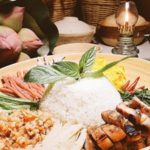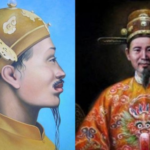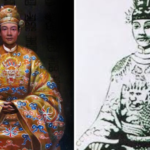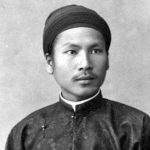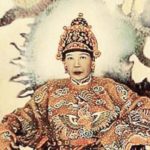Among the Nguyen dynasty kings, King Bao Dai is known as the Western-influenced king. This is understandable because from a young age, Prince Vinh Thuy was sent by his father, King Khai Dinh, to be trained in France to become a future king. King Bao Dai enjoyed hunting and had a particular fondness for a hunting dog. However, the dog died of rabies. Although he did not get bitten by the dog, as he often petted the pet, King Bao Dai had to get a rabies vaccination to be safe.
In 1933, King Bao Dai got a vaccine to prevent illness, and he showed great awareness in this matter to protect his health.
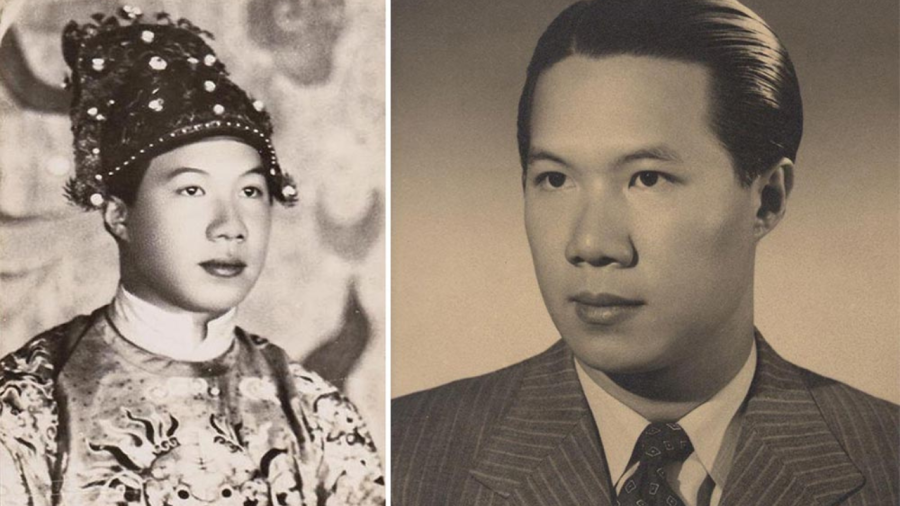
Becoming king at age 13
In 1766, Lord Nguyen Phuc Luan, also known as Hung, the founder of Hieu Khuong Emperor, passed away. At that time, his third son, Nguyen Phuc Anh, only 4 years old, followed his uncle, Nguyen Phuc Thuan, to the South. When Phuc Anh grew up, he was appointed as the Chưởng Sứ Tướng Tả Dự Quân by Duke Thuận. When Duke Thuận died, Phuc Anh was promoted to the rank of Grand Marshal and succeeded Duke Thuận.
In 1802, he ascended to the throne with the regnal title Gia Long, and from then on, the lineage was passed down to Nguyen Phuc Vinh Thuy, also known as King Bao Dai, the 13th monarch of the Nguyen dynasty. King Vinh Thuy ascended the throne at the age of 13, succeeding King Khai Dinh and ruling for 19 years until the success of the August Revolution.
Nguyen Phuc Vinh Thuy was born on October 22, 1913. at the age of 9, he was adopted by Ambassador Hue, Charles, and brought to France to study “the profession of being a king” at the specialized political science school, Lycée Condoreet puis Sciences Politique in Paris. At the end of 1925, King Khai Dinh passed away, and on January 8, 1926, Vinh Thuy was enthroned.
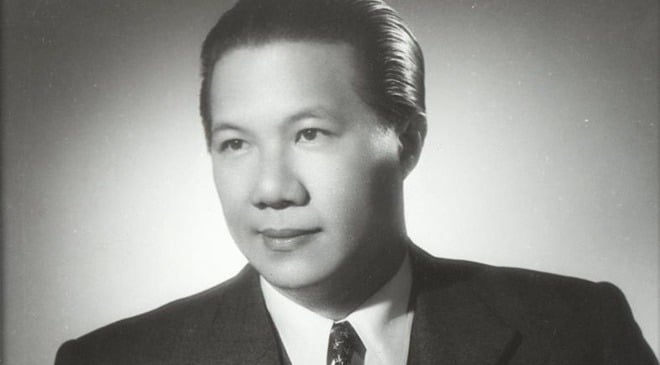
After the coronation and the burial of his father, Bao Dai returned to France to continue his studies, and all domestic affairs were entrusted to the Regency Council, headed by the high-ranking mandarin Nguyen Huu Bai. In reality, all matters were arranged and ruled by the French, while the Southern government merely played a nominal role.
From the mid-1920s, many pro-national parties were founded in our country, establishing revolutionary districts and stirring up anti-French movements. Faced with this situation, in the summer of 1932, France had to bring Bao Dai back to Vietnam with the hope that he had completed his higher education in political science so that the young Western-style king could win over the youth, especially the intellectual class, and dampen the anti-French movements.
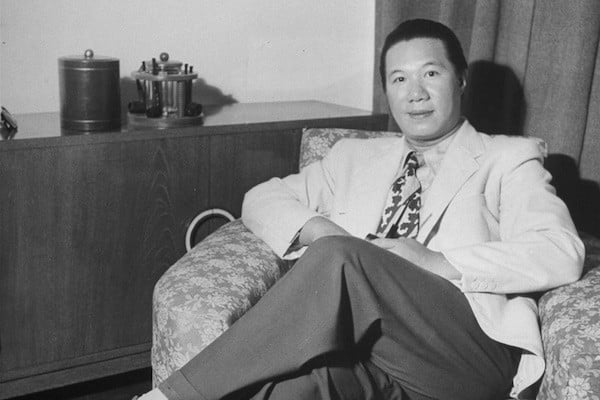
In early September 1932, when he returned to Hue, Bao Dai immediately introduced himself to the courtiers and the people, making many promises and expressing his desire for reform and the construction of a civilized country. Indeed, after 10 years of studying in France, absorbing Western lifestyles, Bao Dai abandoned the traditional customs and rituals that previous kings adhered to. Firstly, he abolished the mandatory ritual, where subjects had to kneel before him when they visited, allowing them to admire the royal dignity without fear of disrespect. Secondly, on this occasion, Western officials were also relieved of the need to kowtow and could simply greet each other in a friendly manner following Western customs.
Moreover, Bao Dai reformed the administrative machinery, retiring senior ministers who were old or lacked competence. For example, Nguyen Huu Bai had been a minister for too long, and he had a pro-French attitude, so he was retired first. At the same time, he appointed 4 new ministers selected from the administrative and scholarly circles. Later on, he also established additional ministries and created the House of Representatives to present the aspirations of the people to the king and the French government.
The king also allowed the North Advisory Council to represent the Southern government in cooperation with the protectorate government. Meanwhile, Bao Dai conducted state visits, first paying respects to the Nguyen Dynasty ancestral spirit in Nghe An, visiting Vinh Quy Bài cemetary, then visiting Hanoi, Saigon, the Central Highlands, and other provinces to understand the desires of the people. Perhaps that is why he was called the “Reforming King” at that time.
Meeting with Queen Nam Phuong
Queen Nam Phuong, whose baptism name was Nguyen Huu Thi Lan, came from a very wealthy family. Later, she studied abroad in France. King Bao Dai’s real name is Nguyen Phuc Vinh Thuy. He is the only son of Emperor Khai Dinh and also went to France to study at a young age. Presumably, it was their shared understanding of Western culture that brought them together at a dinner party in Da Lat, where they met and became fond of each other. However, there are also some reports that before this meeting, Nguyen Huu Thi Lan had met Bao Dai on the ship from France to Vietnam in 1932.
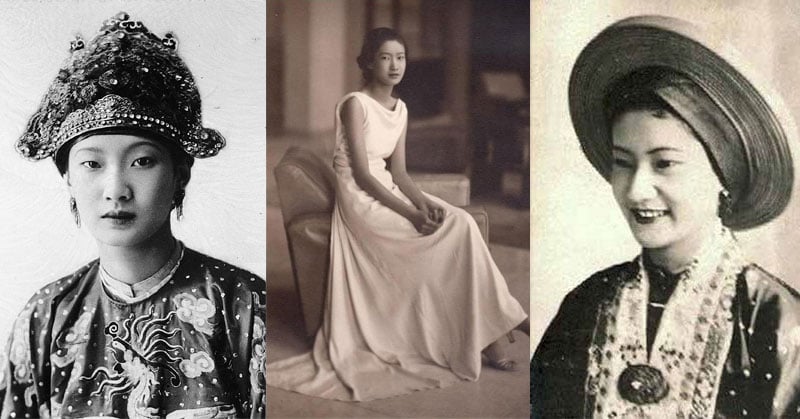
During their vacation in Dalat, Bao Dai and Nguyen Huu Thi Lan played tennis and had conversations. It only took a few days of meeting for them to develop feelings for each other. However, many doubted whether this meeting was arranged in preparation for a marriage. Speaking of Nguyen Huu Thi Lan, Bao Dai once confided: “She has a gentle beauty of the southern region with a touch of the West. That’s why I chose the double name Nam Phuong as her title.” Their wedding took place on March 20, 1934, at Kien Trung Palace.
Upon receiving the proposal from the king, Nguyen Huu Thi Lan’s family agreed with conditions. The bride’s request was that she must be appointed as the Empress at the Imperial Court on the wedding day. This made the court officials unhappy because in the 13 Nguyen dynasty kings, only 2 empresses were appointed while they were alive. In addition, another condition was that Lan would be allowed to maintain her Catholic faith and their children would be baptized according to Catholic rules. Bao Dai disregarded all objections to marry Nguyen Huu Thi Lan.
The king rejected the arranged marriage by his mother, Queen Tu Cung. The person chosen by his mother for the king was the son of an assistant prefect from Phong Dien (Thua Thien) who had made all the preparations for entering the royal court. Queen Tu Cung was very upset when her plan was rejected by the king. The whole court seemed to be in turmoil. However, all calculations failed before Bao Dai’s determination. He affirmed to his mother that if he could not marry Thi Lan, he would remain single for life. On March 20, 1934, the wedding ceremony took place in Hue. Four days later, the coronation ceremony was held very solemnly in Duong Tam Palace. The king conferred upon Nguyen Huu Thi Lan the title of Nam Phuong Empress.
She gave birth to 5 children for King Bao Dai, including Prince Bao Long, Princess Phuong Mai, Phuong Dung, Phuong Lien, and Prince Bao Thang. After King Bao Dai abdicated in 1945, Queen Nam Phuong moved to An Dinh Palace, on the bank of the An Cuu River to live. Leaving behind the luxurious life of a queen, she raised her children with all her strength, contributed gold and silver, and mobilized the people of Hue to raise funds for the new government.
When news of Queen Nam Phuong’s passing reached him, Bao Dai immediately returned and purchased a oak wood coffin, the most precious wood imported from France, to bury his kind, gentle, compassionate, and ethical wife, who had never been criticized or complained about until the end of her life.
Even Bao Dai never dared to reproach his wife for romantic relationships. Since the separation from Bao Dai, Nam Phuong never had any romantic relationships, whether it was dancing or swimming with another man. Perhaps she was born into a traditional family, so she strictly adhered to her faith, even with her children. Nam Phuong’s remains were buried in the Catholic cemetery in Chabrignac. On her grave, there is an epitaph that reads: “Ici Repose l’Imperatrice Nam Phuong Nee Jeanne Mariette Nguyen Huu Hao 14/11/1913 – 15/9/1963.” On the back of the tombstone, there is a line in Chinese: “Đại Nam Nam Phuong Hoàng hậu chi lăng.
The most powerful Empress who survived through 10 out of 13 Nguyen emperors, who is she?
Among the queens of the feudal regime in Vietnam, she is recorded in history as the longest-living.

























